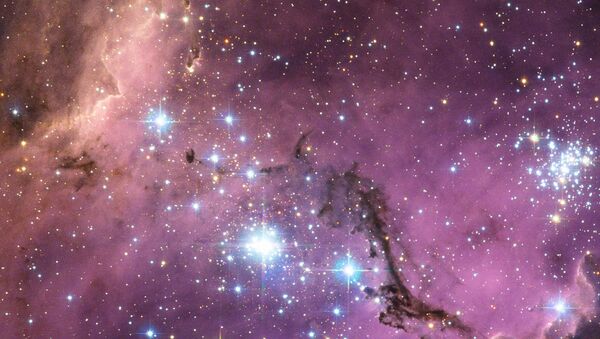A new research paper ("A Galactic-scale gas wave in the solar neighborhood") published in the journal Nature outlines a recently uncovered suburb of baby-booming stars that could drastically change the Milky Way's landscape – the so-called Radcliffe Wave, a 9,000-light-year-long stream of baby stars, or more likely, star-forming gas, romantically referred to as “stellar nurseries".
Gigantic Wave of Star-Forming Gas Is Largest Known Structure of Its Kind in Milky Way.https://t.co/t1yNykP6tH
— Cosmological (@kenserlore96) January 8, 2020
The Radcliffe Wave, understanding the Milky Way thanks to #science#research#astronomy#space
The wave snakes upward through the constellations of Taurus and Perseus before finally cresting by the constellations Cepheus, slightly above the centre of the galaxy.
When looked at in 3D as it hovers slightly above the Milky Way, this swooping suburb of baby-booming stars appears to be more than just the sum of its parts, study co-author João Alves pointed out in a statement, adding that it looks like the “largest coherent gas structure we know of in the galaxy".
The discovery appears to have long been on the surface, but it is only now that the “stellar nurseries” have been revealed.
Astronomy discoveries are coming in thick and fast at #aas235 this year.
— Becky Smethurst (@drbecky_) January 7, 2020
But this one definitely caught my eye - a giant wave of gas clouds running through the Milky Way in the Sun's backyard has been found 😱
Ft. @AlyssaAGoodman @joaoalves @cszuckerhttps://t.co/4jafLz4n0T pic.twitter.com/5l0m7DVGE6
The undulating pattern of stellar gas masses around Orion was noticed when Alves and his colleagues were creating a 3D map of the Milky Way with data harvested by ESA’s Gaia satellite and, in particular, looking at an object known as the Gould Belt, which was first detected more than 100 years ago.
Astronomers have until recently thought the Gould Belt was a ring-shaped circle of star-forming gas, with Earth's Sun near its centre, but in the latest research, they came to believe the formation was just a piece of a much more massive Radcliffe Wave, named after Harvard’s Radcliffe Institute for Advanced Study, where most of the research was done.
"We don't know what causes this shape but it could be like a ripple in a pond, as if something extraordinarily massive landed in our galaxy", Alves said, remarking that our Sun definitely interacts “with this structure", as per stellar velocity data, our solar system “surfed” through the wave around 13 million years ago and is expected to do the same in the next 13 million years.

